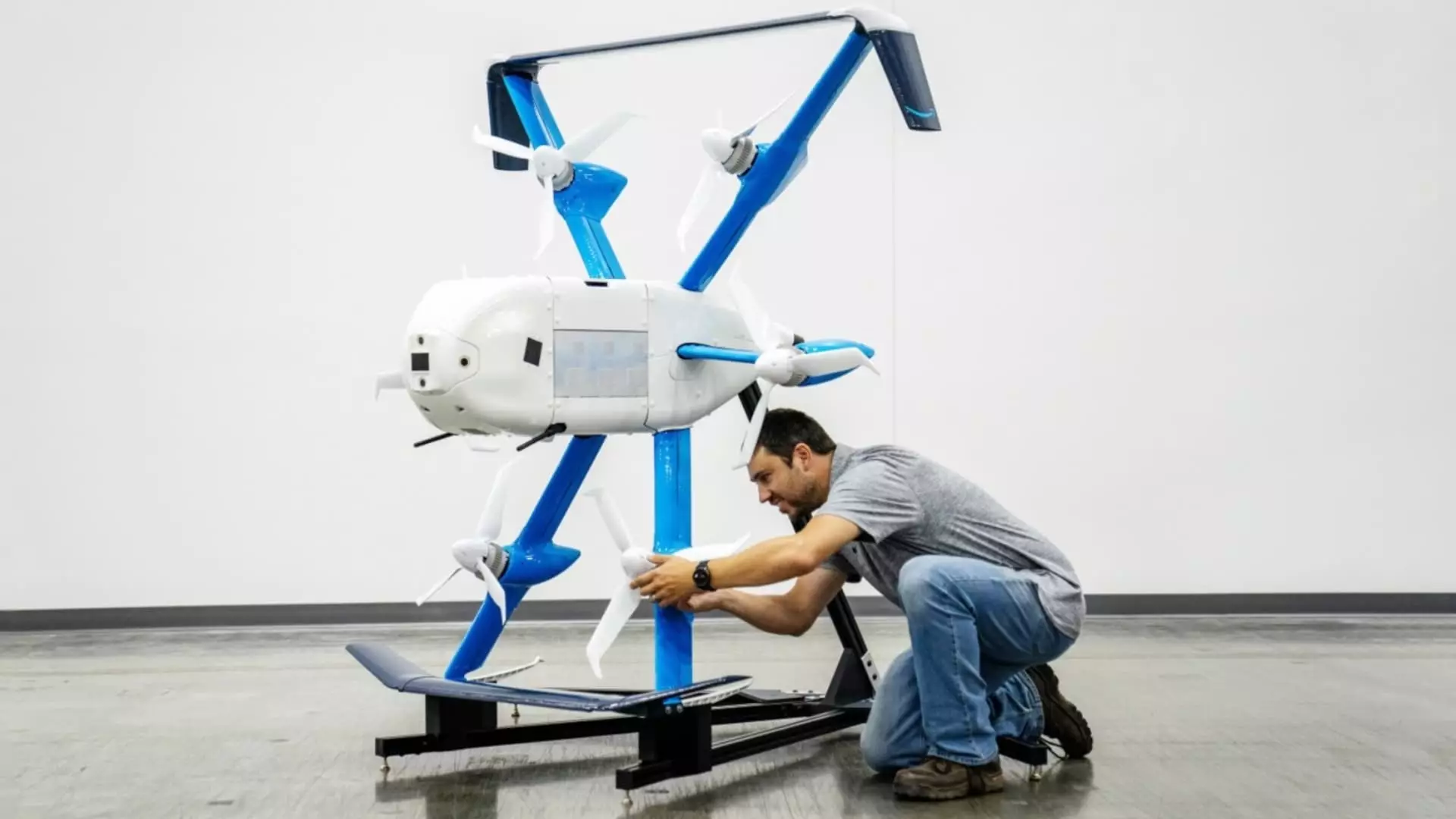On a recent Tuesday, Amazon made headlines by announcing that it has secured regulatory approval to launch a quieter, compact iteration of its delivery drone, dubbed the MK30. This development marks significant progress in Amazon’s long-standing ambition to deploy drone technology for deliveries, a project that has encountered numerous obstacles since its inception over a decade ago when founder Jeff Bezos first shared his vision of a revolutionary delivery system. The MK30, revealed in November 2022, boasts an impressive flight range and the capability to operate under light rain—features designed to enhance its operational efficiency and reliability.
The Federal Aviation Administration (FAA) has approved Amazon’s request for the MK30 to operate beyond the visual line of sight of its pilots, a critical milestone for any drone delivery service. Although a previous waiver was granted in May for operations limited to College Station, Texas, the recent green light expands potential delivery areas and capabilities. This regulatory approval aligns with Amazon’s broader objectives to enhance its logistics framework, particularly as it initiates drone deliveries near Phoenix, Arizona. The integration of drone technology into Amazon’s existing logistics network not only aims to improve delivery times but also presents an opportunity to revolutionize the last mile of the配送 (delivery) process.
In a pivot towards enhancing its drone operations, Amazon announced its intention to launch delivery services in Tolleson, a suburb west of Phoenix, signaling a strategic shift from its previous test site in Lockeford, California. This relocation highlights Amazon’s adaptability and responsiveness to operational challenges, as well as a commitment to enhancing its service offerings. The Tolleson site will benefit from proximity to one of Amazon’s warehouses, potentially allowing for swifter dispatch and improved logistics coordination.
The shift in operational sites also underscores broader changes within Amazon’s drone division. With recent layoffs and departures, including significant leadership changes in the Prime Air sector, the company has made concerted efforts to rebuild and recalibrate the team. By appointing former Boeing executive David Carbon to lead the operation, Amazon aims to leverage his expertise in aerospace to steer the project towards clearer skies.
Despite the exciting advancements, Amazon’s endeavors have not been without friction. Community resistance has surfaced in various areas where drones have been tested, notably in College Station, where residents have voiced concerns over noise pollution. Such complaints have been serious enough to elicit responses from local government leaders, reflecting the challenges Amazon faces as it seeks local acceptance for its innovative delivery methods. Notably, Amazon has committed to reassessing its launch strategies by 2025, indicating its willingness to address community sentiments while pursuing technological advancements.
Amazon does not operate in a vacuum; it faces stiff competition from an array of companies exploring drone delivery solutions. Rivals like Wing, owned by Google’s parent company Alphabet, and established logistics giants such as UPS and Walmart, are also aggressively venturing into this domain. Innovative startups like Zipline and Matternet further intensify the competition, suggesting a rapidly evolving landscape where flexibility and adaptation will be vital for success.
As Amazon embarks on this next phase of its drone delivery initiative, the comprehensive regulatory approval of the MK30 signifies an encouraging step forward. However, the road ahead is fraught with challenges ranging from regulatory complexities and community pushback to fierce competition. The company’s ability to navigate these dynamics will ultimately impact the pace and success of its drone program. As the market evolves, stakeholders will be watching closely to see whether Amazon can fulfill its ambitious vision of transforming the delivery landscape through drone technology. The integration of this innovative solution could redefine logistics, yet it remains tethered to the realities of public reception and operational hurdles that Amazon must continuously address.

